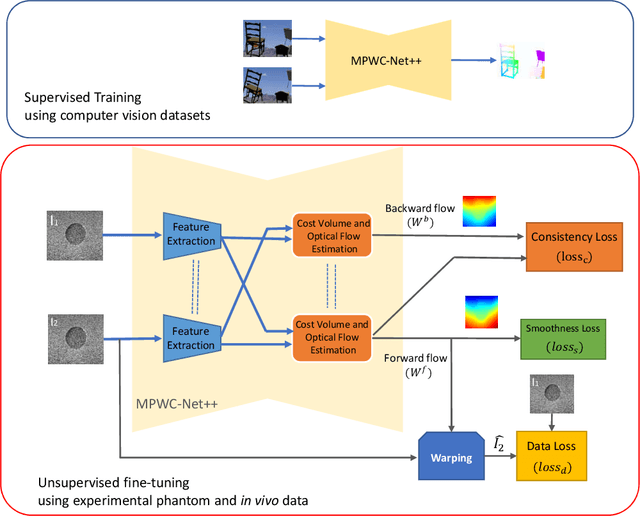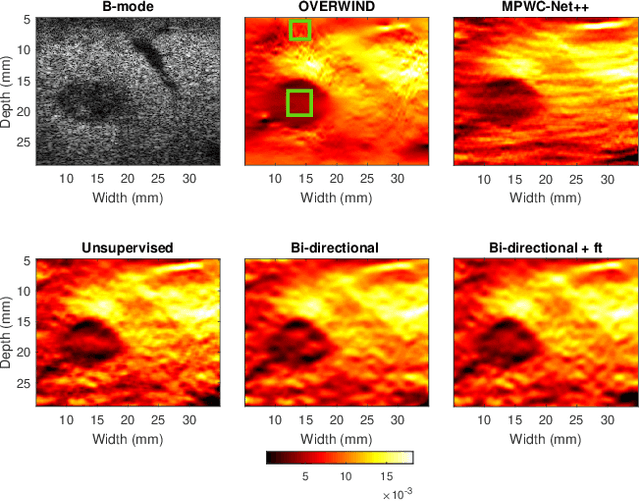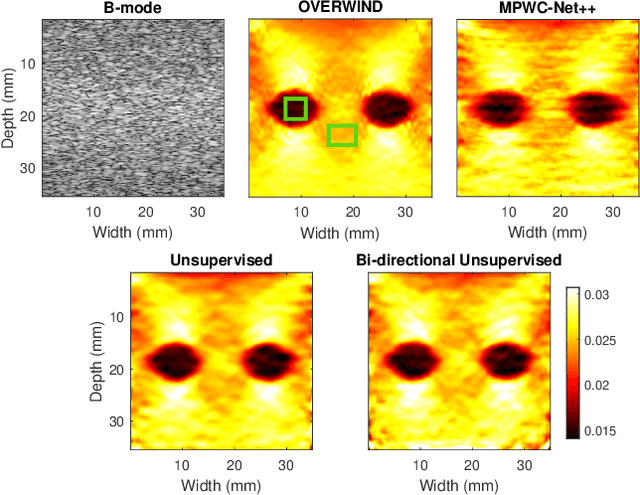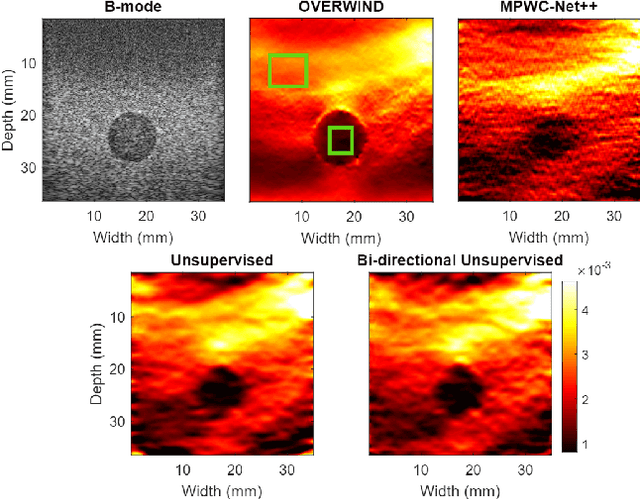Bi-Directional Semi-Supervised Training of Convolutional Neural Networks for Ultrasound Elastography Displacement Estimation
Paper and Code
Jan 31, 2022



The performance of ultrasound elastography (USE) heavily depends on the accuracy of displacement estimation. Recently, Convolutional Neural Networks (CNN) have shown promising performance in optical flow estimation and have been adopted for USE displacement estimation. Networks trained on computer vision images are not optimized for USE displacement estimation since there is a large gap between the computer vision images and the high-frequency Radio Frequency (RF) ultrasound data. Many researchers tried to adopt the optical flow CNNs to USE by applying transfer learning to improve the performance of CNNs for USE. However, the ground truth displacement in real ultrasound data is unknown, and simulated data exhibits a domain shift compared to the real data and is also computationally expensive to generate. To resolve this issue, semi-supervised methods have been proposed wherein the networks pre-trained on computer vision images are fine-tuned using real ultrasound data. In this paper, we employ a semi-supervised method by exploiting the first and second-order derivatives of the displacement field for the regularization. We also modify the network structure to estimate both forward and backward displacements, and propose to use consistency between the forward and backward strains as an additional regularizer to further enhance the performance. We validate our method using several experimental phantom and in vivo data. We also show that the network fine-tuned by our proposed method using experimental phantom data performs well on in vivo data similar to the network fine-tuned on in vivo data. Our results also show that the proposed method outperforms current deep learning methods and is comparable to computationally expensive optimization-based algorithms.
 Add to Chrome
Add to Chrome Add to Firefox
Add to Firefox Add to Edge
Add to Edge